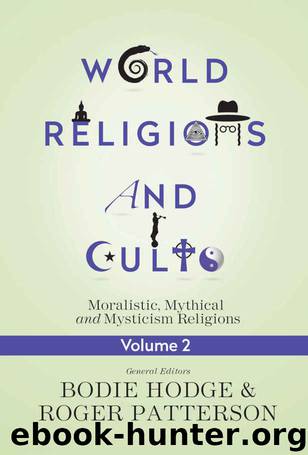World Religions and Cults Volume 2 by Bodie Hodge & Roger Patterson

Author:Bodie Hodge & Roger Patterson [Hodge, Bodie]
Language: eng
Format: epub
Tags: REL067030, REL017000
ISBN: 9781614585046
Publisher: Master Books
Published: 2016-05-17T23:00:00+00:00
This stela depicts a person in prayer appealing to the hearing ears of the gods. Artifacts like these are associated with the later centuries of ancient Egypt’s history, during the New Kingdom.
Artifacts from the New Kingdom, later in ancient Egypt’s history, reveal that some people were concerned with the problem of sin. “Penitential texts” recovered from excavations at Deir el-Medina include both brief and elaborate prayers. One of the best examples found there on the Stela of Nebre may be translated:
Though the servant was disposed to do evil,
The Lord is disposed to forgive.
The Lord of Thebes spends not a whole day in anger,
His wrath passes in a moment, none remains.
His breath comes back to us in mercy,
Amun returns upon his breeze. . . .14
Eventually, a personal relationship with the goddess Isis and the availability of salvation through her became a part of Egyptian religion accessible to those without royal blood or riches. The awareness of sin and concern about death reminds us that ancient Egyptians had the same concerns as modern people, even though they had rejected the God who could answer their needs.
Man and the Afterlife
Egyptian temples were devoted to the care and worship of the gods on whom the Egyptians depended to keep back the forces of chaos until the end of time. But with death, a person’s fate became a more immediate concern. Unlike atheistic evolutionists, Egyptians did not assume that man was only an animal and that life ended forever at the grave.
What is man? Understanding the ancient Egyptian view of the afterlife requires knowledge of their answer to this question. While not much concerned with the origin of man, Egyptians were concerned with the essential elements of a person — his body, his name, and his shadow, his ka and his ba. Though scholars suspect that in early days the ancients believed only the pharaoh possessed all these elements, by later times the nobility and likely even common people were dignified by a nature worth preserving and protecting through ritual.
The Egyptians believed the physical body was inhabited by an invisible ka and ba that departed at death but were able to return to a properly preserved body. While the ka was more associated with attaining sustenance, the invisible ba was more like a ghostly manifestation of the person, able to go to the world beyond and interact with the cosmos inhabited by the gods. Ongoing existence beyond the grave demanded a preserved body, one processed by rituals that often included various types of mummification. The body was not thought to physically move about or eat, but rather to provide a home to which the ka and ba would return from their excursions. Surrounding this preserved body would be instructions and amulets to assist the dead in facing judgment and in navigating the afterlife.
Like other ancient cultures that have left tombs filled with grave goods and evidence of companions to serve the departed in the life beyond, the ancient Egyptians’ careful treatment of the dead and
Download
This site does not store any files on its server. We only index and link to content provided by other sites. Please contact the content providers to delete copyright contents if any and email us, we'll remove relevant links or contents immediately.
Signature in the Cell: DNA and the Evidence for Intelligent Design by Stephen C. Meyer(3075)
The Secret Power of Speaking God's Word by Joyce Meyer(2980)
Real Sex by Lauren F. Winner(2968)
The Holy Spirit by Billy Graham(2894)
The Gnostic Gospels by Pagels Elaine(2472)
Jesus by Paul Johnson(2311)
Devil, The by Almond Philip C(2283)
23:27 by H. L. Roberts(2198)
The Nativity by Geza Vermes(2180)
Chosen by God by R. C. Sproul(2123)
All Things New by John Eldredge(2106)
Angels of God: The Bible, the Church and the Heavenly Hosts by Mike Aquilina(1932)
The Return of the Gods by Erich von Daniken(1898)
Angels by Billy Graham(1888)
Knowing God by J.I. Packer(1807)
Jesus of Nazareth by Joseph Ratzinger(1769)
Evidence of the Afterlife by Jeffrey Long(1745)
The Gnostic Gospel of St. Thomas by Tau Malachi(1738)
How To Be Born Again by Billy Graham(1731)
